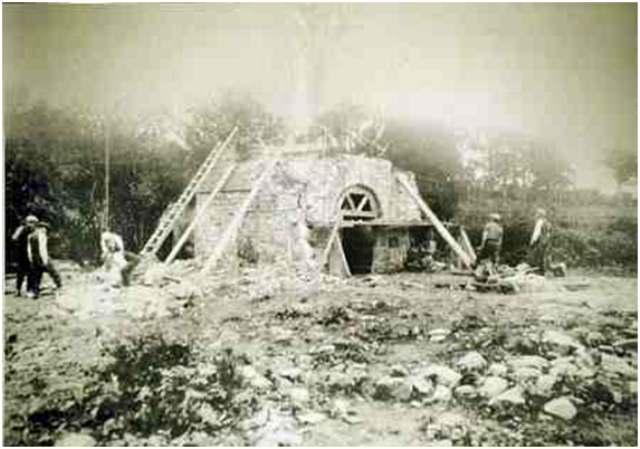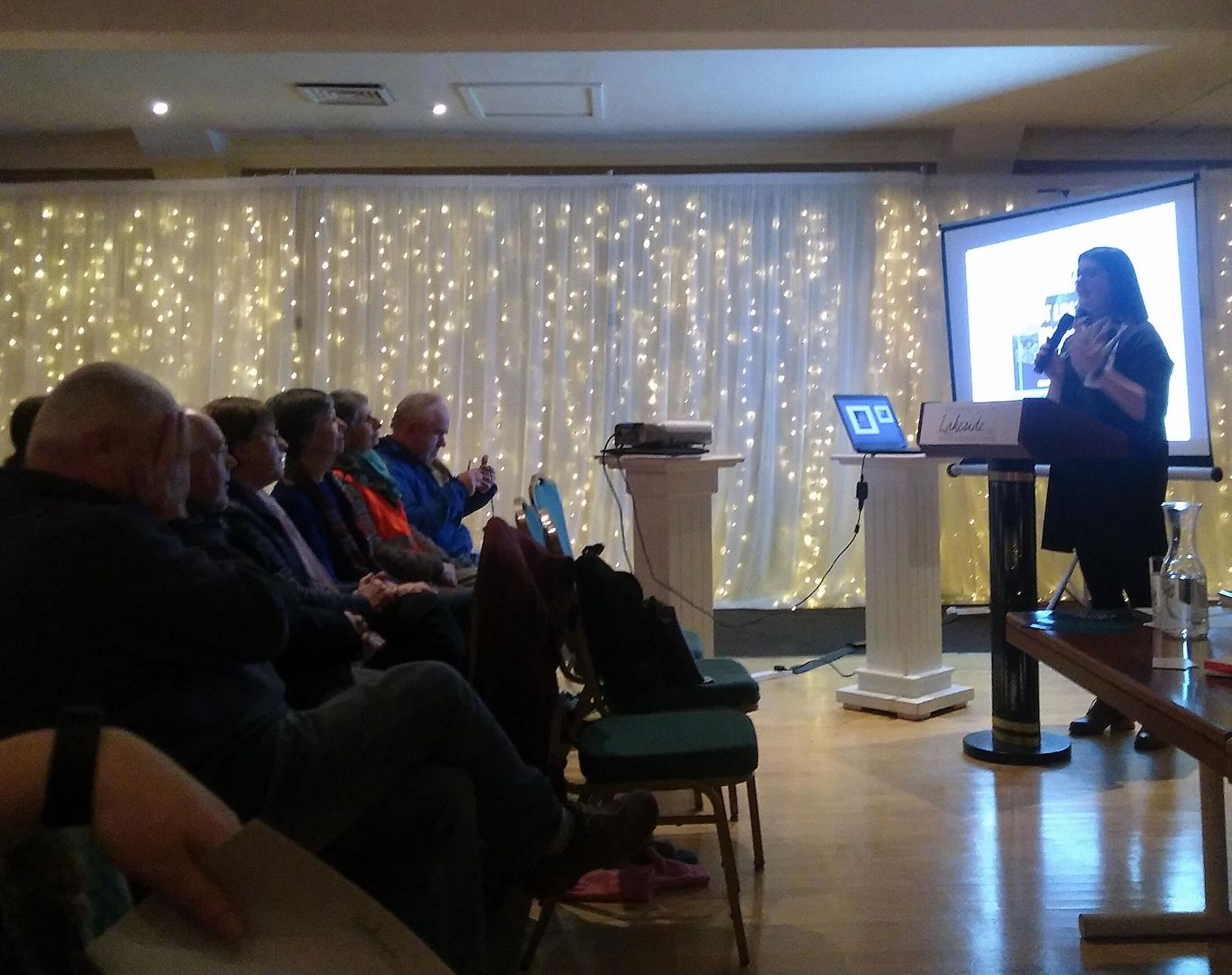We welcomed an audience of just under sixty people to our first talk of 2019, which took place last Wednesday night in the Lakeside Hotel. It was a most fascinating account of the history of St. Lua’s/Molua’s Oratory – not the history associated with its erection or its use, but the story of how it was moved from Friar’s Island, a small island in the Shannon, about one mile downstream of Ballina, to the grounds of St. Flannan’s Church in the Green, Killaloe.

Dr. Niamh NicGhabhan, who has researched extensively on this little oratory, brought us through this fascinating journey, which began in 1925, when it was realised that Friar’s Island and the Oratory would be completely submerged because of the rising water levels due to Shannon Hydro-Electric Scheme.
Three options for the future of St. Lua’s Oratory were examined
1. Repair and strengthen the oratory and allow it to be submerged;
2. Erect an 18ft concrete circular plinth, which would be floodlit;
3. Move it stone by stone from the island to a new location.
Initially, Option 2 was the preferred option for all bodies involved. Even though it was due to cost a massive £1,700, it was felt that it would be a huge tourist attraction for the area.
However, Bishop Michael Fogarty, Killaloe, said that the oratory was a religious and historical icon for Roman Catholics in Killaloe and argued that it should be moved to a location where more than “the birds in the sky” could visit it!
Suffice to say, Bishop Michael Fogarty, won his argument and in 1928, St. Lua’s Oratory was taken down, each stone was marked individually and moved in a flat-bottomed barge called “St. Lua” to the mainland in Ballina where it was brought by donkey and cart to the current site where it still stands today!

Úna Kierse, daughter of the late Seán Kierse, read a recollection by Sr. Paul Byrne, Killaloe, from 1994, of attending the last mass held in St. Lua’s Oratory before it was moved from Friar’s Island – this highlighted how important this final mass was to the people of Killaloe and Ballina.
We would like to say a huge thanks to Niamh for a fantastic informative lecture which gave us all a further insight into the life of this little Oratory.
If you would like to find out more, we have provided Niamh’s recommendations for further reading below –
Medieval Ireland and the Shannon Hydro-Electric Scheme: reconstructing the past in independent Ireland by Niamh NicGhabhann;
Churches in Early Medieval Ireland by Tomás O Carragain;
A Dictionary of Irish Saints by Pádraig Ó’Riain
We would also like to say a huge thanks to the Lakeside Hotel and Leisure Centre for hosting our lectures.


